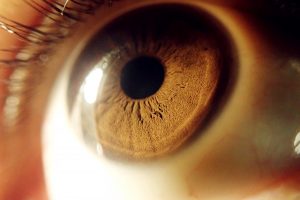Does Corneal Crosslinking Cause Any Side Effects?
- Posted on: Jan 25 2020
 Side effects can occur with virtually any eye treatment, including corneal crosslinking for keratoconus. Luckily the side effects of corneal crosslinking are usually mild and temporary.
Side effects can occur with virtually any eye treatment, including corneal crosslinking for keratoconus. Luckily the side effects of corneal crosslinking are usually mild and temporary.
If you are considering corneal crosslinking to stop the progression of keratoconus, Dr. Gregory Pamel will educate you about the potential side effects. Read on as he shares what you need to know.
Overview of Corneal Crosslinking
The goal of corneal crosslinking is to strengthen corneas that have developed a degenerative disease called keratoconus. This condition causes the cornea to grow thin and weak, and bulge outward in a cone-shape, which causes blurry or distorted vision. Collagen fiber crosslinks normally act as a type of structural support for the cornea, but corneas with keratoconus do not have enough of these crosslinks.
Using a combination of ultraviolet light and riboflavin eye drops, corneal crosslinking causes new collagen crosslinks to develop, stabilizing and strengthening the cornea. This stops the progression of keratoconus and prevents the cornea from bulging more.
Corneal crosslinking treatment takes about an hour and can be completed in Dr. Pamel’s office. The eyes are numbed and there is normally no discomfort during the procedure.
There are two types of corneal crosslinking. Epithelium-off crosslinking involves removing the epithelium, or outer layer of the cornea, so the riboflavin drops can penetrate the deeper corneal tissue. Epithelium-on crosslinking is performed with the epithelium left intact; however, clinical trials have not shown this to be a safe or effective approach.
Potential Side Effects
Minor side effects of corneal crosslinking include increased sensitivity to light and a foreign body sensation (i.e., the feeling of a speck of dirt or debris stuck in the eye).
Some patients experience minor discomfort as the epithelium regenerates and the cornea heals. This discomfort can be described as a gritty or burning sensation in the eye. However, it is important not to rub the eyes as it can disturb the healing cornea.
Visual acuity can also change during recovery; even after it stabilizes, there may be minor fluctuations from time to time.
Patients must wear a bandage contact lens over the treated eye for approximately three days, and use eyedrops to control discomfort, prevent infection and promote optimal healing.
Contact Dr. Pamel Today
If you had corneal crosslinking and are experiencing side effects, Dr. Pamel can work with you and provide solutions to help you get through the healing process more comfortably.
If you are considering corneal crosslinking and want more information, please call or email our practice today.
Posted in: Corneal Crosslinking




